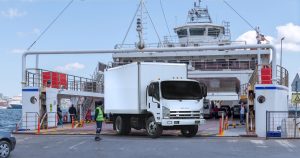
Logistics operations are crucial for any business for a number of reasons. First, it enables them to receive the raw materials to be used in producing the final product. These delivery operations are also put into action when a company does outbound logistics, a process wherein finished goods are transported to a distribution center or straight to a customer’s home. Finally, cargo and freight shipping operations are used to expand and reach new locations. And for an archipelagic country like the Philippines, roro (roll on roll off) shipping is important to move goods across bodies of water.
The Philippines is a country composed of more than 7,000 islands. This fact paints a difficult picture when it comes to domestic freight services. Oftentimes, large corporations and even small and medium enterprises (SMEs) will face the challenge of transporting goods across the sea, such as from Manila to Cebu. This will entail a large cost if the company chooses to air freight services as their delivery option. They will also face the same situation if they opt for a container shipping system because of the large cargo handling costs. Thus, in this situation, the best option for the company would be to use the roro (roll on roll off) shipping system.
What is the Roro (Roll On Roll Off) shipping system?
Recognizing the need to make interisland logistics more feasible and at affordable prices, the Philippine government introduced the Roll on Roll off (RORO) Terminal system. Through the RORO terminal system, clients from all over the Philippines can move goods and products across the three main island groups: Luzon, Visayas, and Mindanao.
The roro shipping system in the Philippines is quite easy to understand. First, the delivery vehicle is filled with products from the warehouse or storage facility. Then, it travels to the port where it is loaded into the roro vessel. After the ship arrives at the destination port, it rolls out of the ship and into the final drop-off point. There is no need to worry about the cargo handling process. By using the roro shipping system, such a process is circumvented because the same truck will be used throughout the journey, from the pick-up point up to the final drop-off point.
The roll on roll off shipping solution was able to help many sectors in the Philippines’ economy. First of all, it was a big help to the agriculture industry. A report from the Asian Development Bank says that roro ports trade 60% more types of agricultural products compared to non-roro terminals. Another sector greatly helped by this logistics solution is the small and medium enterprises. Through roro shipping, they can move their goods and products across different islands at business-friendly rates.
In summary, the roro shipping system is a great logistics solution in reducing delivery costs. This helps and encourages businesses to expand by transporting their goods to other locations across bodies of water. This translates to more commercial and trade activity in the Philippines.